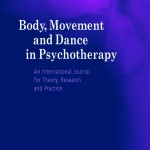
 We are excited to announce an important training opportunity. Space is limited so please sign up soon!
We are excited to announce an important training opportunity. Space is limited so please sign up soon!
The training will be conducted in Virginia and will include one of our best-trained and highly seasoned teams. Participants in the training will have a chance to be one of the treatment providers in a foundational study on SE.
This study will be conducted in collaboration with Attachment and Trauma Institute in Virginia. It has the real possibility to contribute its data to supporting the development of trauma informed care standards in the state of Virginia. This study could provide an important foundation for developing a body-oriented autonomic regulation model of trauma informed care within the state.
Furthermore, if successful, it could be adopted in state run agencies and hospitals and recognized by insurance panels within the state. The state of Virginia was recently nationally chosen as one of two states whose current trauma informed care systemic model statewide will be closely evaluated for its implementation, screening, assessment, applied treatment and outcomes. Outcomes will benefit treatment recommendations in medical and psychiatric hospitals in
both adolescent and adult units, statewide child welfare agencies and local community service boards. Cumulative outcomes gathered after two years will benefit the advancement of body based regulatory models of treatment for some of the most traumatized individuals in our society leading to national awareness.
Participants in this SE training will have the chance to be a treatment provider in this study. While being a treatment provider for this study is not required to participate in this training, those who do participate in this study will have increased training opportunities and receive a high level training experience.
This study will measure changes in trauma symptoms, symptoms of dissociation, general mental health symptoms and quality of life in children and adults. Providers who are willing to participate in the study will be trained on a 10-session treatment protocol.
Providers will receive referrals (5-10 per year) from the research team, who they will have the chance to work with for 10-sessions. During the 10-session treatment providers will receive regular ongoing case consultation.
Providers role in data collection will be minimal (letting the research team know that a client has started and completed treatment). All data will be held anonymously and there will be no way for researchers to connect the outcomes of the study to individual clients or practitioners.
The comprehensive training experiences will include:
1. An extra yearly training on a 10 session SE protocol that helps you develop specific skills to foster emotion regulation in your clients
2. Monthly small group case consultation by some of our best-trained and most seasoned assistants.
3. Regular referrals with ongoing case consultation support This study will assess changes in SE clients over the course of treatment. Providers in this study will also be given regular referrals from the SE study. This will give you as a training participant a unique opportunity to have treatment experience with ongoing case management support.
We will be studying three client populations: Adults with trauma, families with attachment and trauma, and our military.
If you or some of your colleagues work with any of these populations and are interested in studying the impact of SE on clinical treatment, please consider signing up or contacting your colleagues about this opportunity. In order to join the training one must have a degree in mental health or work in a medical profession. Those who have signed up for this training will be contacted by the research team via email. The email will include information about the study and how one can become a provider in the study, information about the procedures used in the study, the study protocol and the training process.
If you would like more information about the study before signing up for the training please feel free to contact the Somatic Experiencing Research Coalition Chair, Michael Changaris, PsyD at drchangaris@gmail.com
.
The beginning module I begins June 5-8.
You can review more details about the training or sign up on our website:
www.traumahealing.org
Or call the Somatic Experiencing Trauma Institute (SETI)
directly at(303) 652-4035
.
Please sign up for the training or refer respected colleagues today.
Space is in the training is limited.







